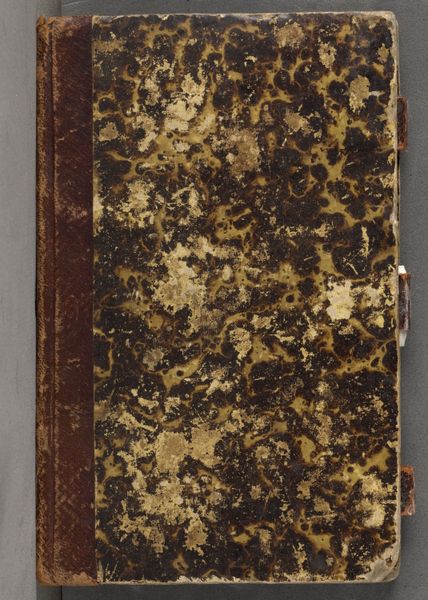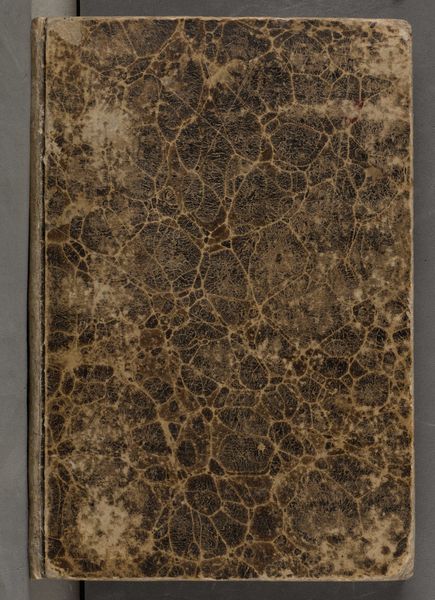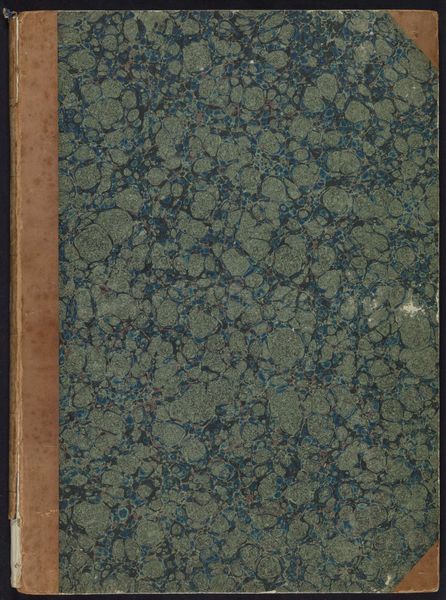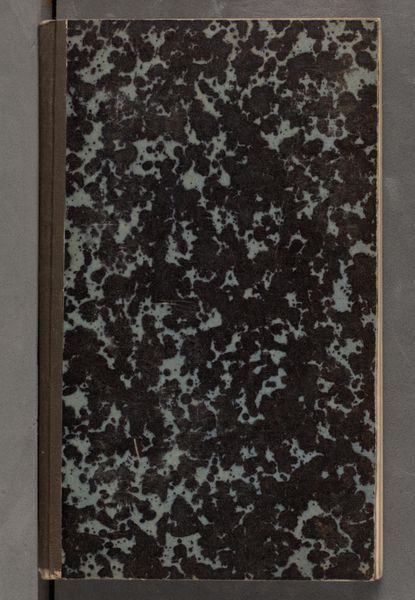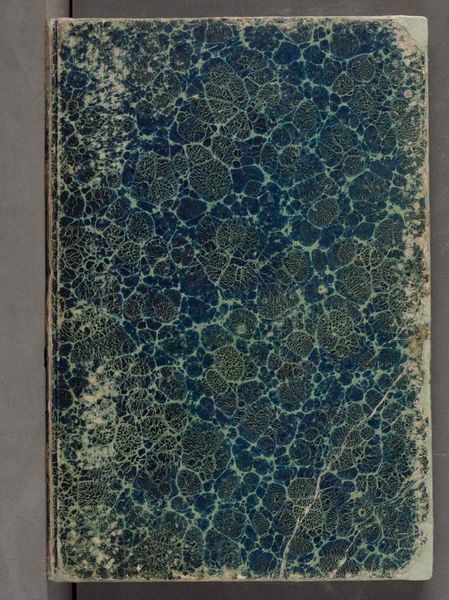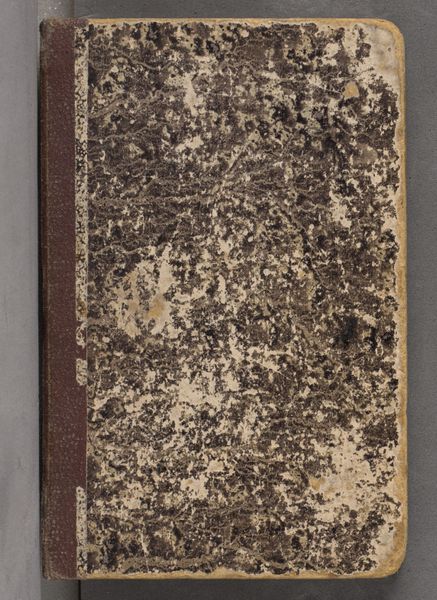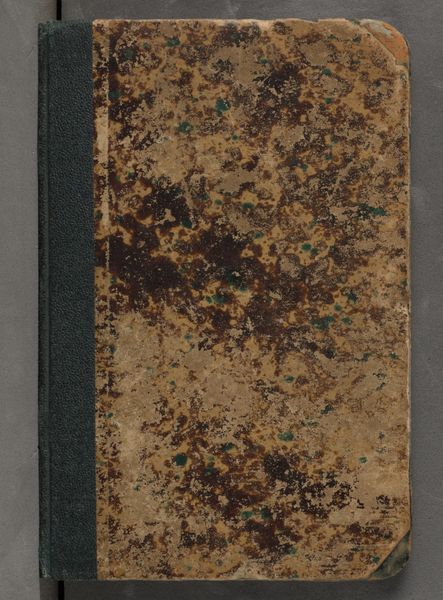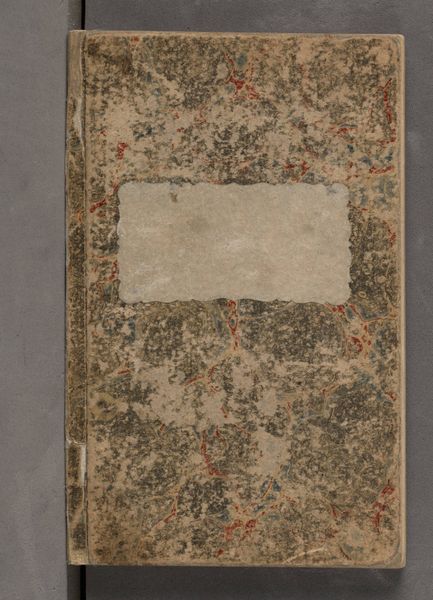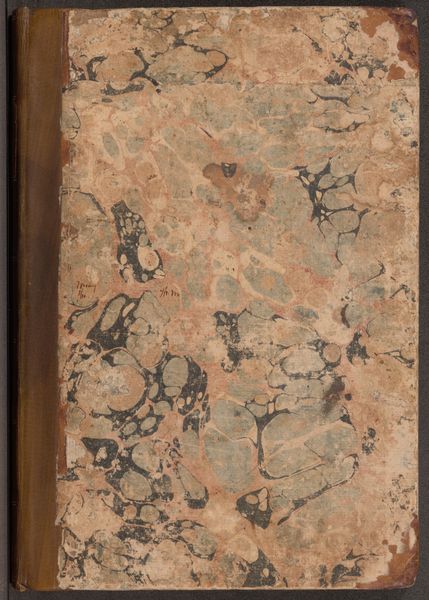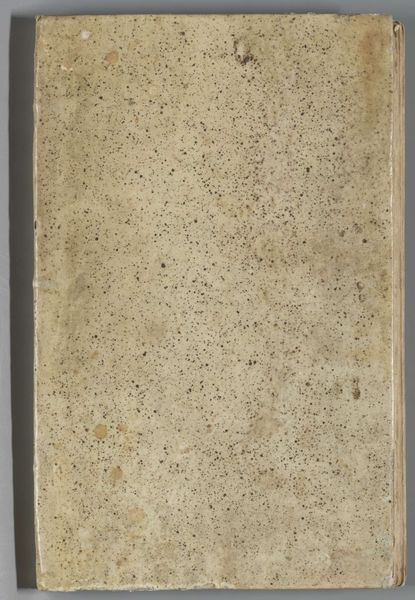
drawing, paper, watercolor, ink
#
drawing
#
paper
#
watercolor
#
ink
#
watercolor
Copyright: Public Domain
Editor: Here we have Ludwig Metz’s "Skizzenbuch," made around 1843 or 44, using ink, watercolor, and drawing on paper. The cover has a marbled pattern that gives it the feel of something discovered in an old attic. What can you tell me about this humble-looking sketchbook? Curator: This isn't just a sketchbook; it’s a record of labor and production. Look closely. What was the process for marbling paper at the time? It’s a process of skilled craft, involving tools and specific materials – not just a spontaneous artistic gesture. This elevates the very "means of production," inviting questions about high art versus craft, consumption and material culture. Editor: So you are less focused on the drawings inside? Does that materiality tie into the function of a sketchbook? Curator: Precisely. The drawings within are certainly important, but it's crucial to consider what this object *is*. It contains an accumulation of labor. Where was the paper sourced? How was it prepared? Was this book commercially produced, or privately bound? These are the crucial questions when assessing value. The cover itself becomes a document. How does it resist or reinforce class structures inherent in art production? Editor: I see what you mean. Considering its original function, do you think Metz was making a statement by using such an ornate cover? Curator: It's more about the tension itself, the juxtaposition of "high" and "low." Metz's intention might be secondary to the reality of its manufacture. The labor of its creation. A beautiful thing that someone produced. Editor: Thinking about the artist's means of making art, considering the materials used feels surprisingly important! Thanks for opening my eyes to the materiality of it all! Curator: Absolutely. Considering materiality allows us to ask bigger questions of context and value.
Comments
stadelmuseum about 2 years ago
⋮
Ludwig Metz used this sketchbook far more for notes and quick design drawings than for detailed architectural or travel studies. Only a few dates can be found at the beginning of the book; they span the years 1840 (September), 1843 (November) and 1845 (May). During this period, Ludwig Metz must have repeatedly spent time in Baden-Württemberg, in Maulbronn, possibly Rastatt, Donaueschingen and, most recently, at Fremersberg in the Black Forest. At the Cistercian monastery in Maulbronn, he was especially interested in the choir stalls, drew views of the nave and the monastery gate. Besides a view over the landscape near Donaueschingen and a half-timbered house at the river Lahn, these are the most elaborate drawings in this book. In addition, Metz included handwritten lists, calculations and remarks, and, on various occasions, quick architectural sketches and constructions, without detailed locations. At Fremersberg, he was evidently involved in a land survey.For a full sketchbook description, please see “Research”.
Join the conversation
Join millions of artists and users on Artera today and experience the ultimate creative platform.

